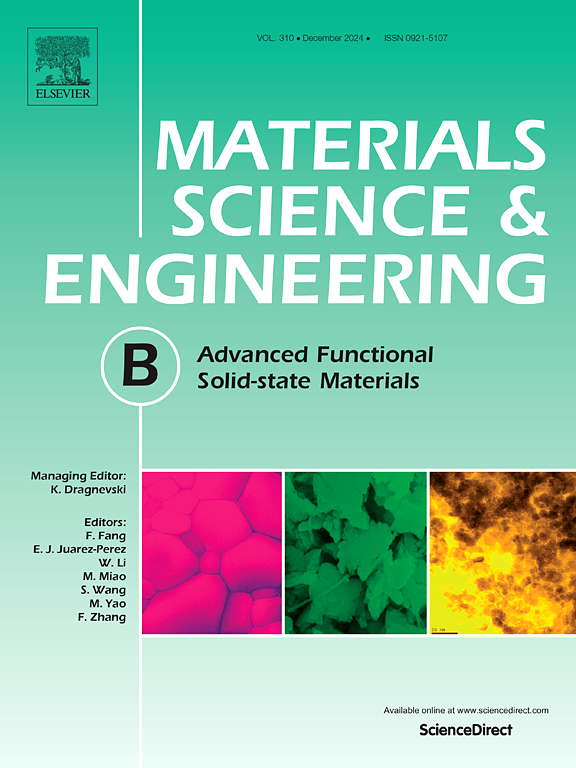Structural tuning and electrochemical behavior of indium halide solid-state electrolytes
IF 3.9
3区 材料科学
Q2 MATERIALS SCIENCE, MULTIDISCIPLINARY
引用次数: 0
Abstract
Halide solid electrolytes have become the core enabling material for solid-state battery systems due to their excellent properties, leading the next generation of energy storage technology innovation. This system inherits the mechanical flexibility of sulfide electrolyte and the electrochemical stability of oxide electrolyte, and achieves a wide electrochemical window while breaking through the bottleneck of room temperature ionic conductivity of the polymer electrolytes. Despite the unique advantages demonstrated by halide electrolytes systems, there are still significant technical bottlenecks in their commercial application. Herein, we report a reasonably designed indium halide electrolyte material with high ionic conductivity and low ionic migration barrier of 1.53 × 10−3 S cm−1 at 25°C. The symmetrical cells constructed based on this method can exhibit 250 h of long cycle stability at 0.4 mA cm−2 with 0.4 mA h cm−2. Especially noteworthy is that the Li3InCl6 shows high stability in air. These breakthrough characteristics make it an ideal electrolyte material candidate for constructing high energy density all-solid-state lithium batteries.
卤化铟固态电解质的结构调整和电化学行为
卤化物固体电解质以其优异的性能成为固态电池系统的核心使能材料,引领着下一代储能技术的创新。该体系继承了硫化物电解质的机械柔韧性和氧化物电解质的电化学稳定性,在突破聚合物电解质室温离子电导率瓶颈的同时,实现了宽电化学窗口。尽管卤化物电解质系统显示出独特的优势,但在其商业应用中仍然存在重大的技术瓶颈。在此,我们报告了一种合理设计的卤化铟电解质材料,该材料具有高离子电导率和低离子迁移势垒,在25°C下为1.53 × 10−3 S cm−1。在0.4 mA h cm−2和0.4 mA h cm−2条件下,对称电池具有250 h的长周期稳定性。特别值得注意的是,Li3InCl6在空气中表现出很高的稳定性。这些突破性的特性使其成为构建高能量密度全固态锂电池的理想电解质材料。
本文章由计算机程序翻译,如有差异,请以英文原文为准。
求助全文
约1分钟内获得全文
求助全文
来源期刊

Materials Science and Engineering: B
工程技术-材料科学:综合
CiteScore
5.60
自引率
2.80%
发文量
481
审稿时长
3.5 months
期刊介绍:
The journal provides an international medium for the publication of theoretical and experimental studies and reviews related to the electronic, electrochemical, ionic, magnetic, optical, and biosensing properties of solid state materials in bulk, thin film and particulate forms. Papers dealing with synthesis, processing, characterization, structure, physical properties and computational aspects of nano-crystalline, crystalline, amorphous and glassy forms of ceramics, semiconductors, layered insertion compounds, low-dimensional compounds and systems, fast-ion conductors, polymers and dielectrics are viewed as suitable for publication. Articles focused on nano-structured aspects of these advanced solid-state materials will also be considered suitable.
 求助内容:
求助内容: 应助结果提醒方式:
应助结果提醒方式:


